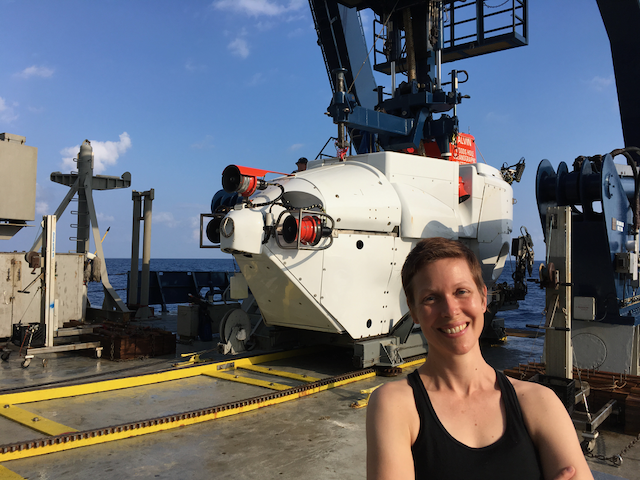
Personnel
Dr. Brandy Toner, Professor, University of Minnesota-Twin Cities
Dr. Rose Jones, Post-Doctoral Researcher, University of Minnesota-Twin Cities
Amalia Scipioni, Undergraduate Researcher, University of Minnesota-Twin Cities
Project Description
Hydrothermal vents, which deposit seafloor massive sulfides (SMS), occur along the 89,000 km of mid-ocean ridges, submarine volcanoes, and backarc basins that occur at tectonic plate boundaries in the ocean. Active hydrothermal vent sulfide chimneys are hotspots of biodiversity and productivity in the deep ocean, as well as potential resources for metals. While significant effort has focused on understanding the diversity of biological communities and geochemistry associated with actively venting SMS, relatively little is known about the biological communities associated with SMS once venting ceases.
The focus of this project is the microbiological and geochemical changes that occur during the transition period from active to inactive venting, during which an ecological succession occurs in the microbial community. This project creates and samples this transition period by collecting multiple active SMS samples from individual vents at 9 N East Pacific Rise (EPR). Seafloor sulfides are allowed to transition to inactive conditions during seafloor incubation. This mimicks the end of venting while allowing for the exact time when venting ceased to be known, something not possible when sampling naturally formed inactive SMS.
In three oceanographic expeditions to the East Pacific Rise 9N, lead PI Jason Sylvan's group analyzed return samples for microbial community diversity and metabolism in parallel with bulk (Co-PI Tivey) and fine-scale (Co-PI Toner) geological measurements for active, transitioning, and inactive sulfides. We are measuring how microbial communities, rates of biogeochemical transformations, and geological conditions change as SMS transition from hot and actively venting to cold and inactive.